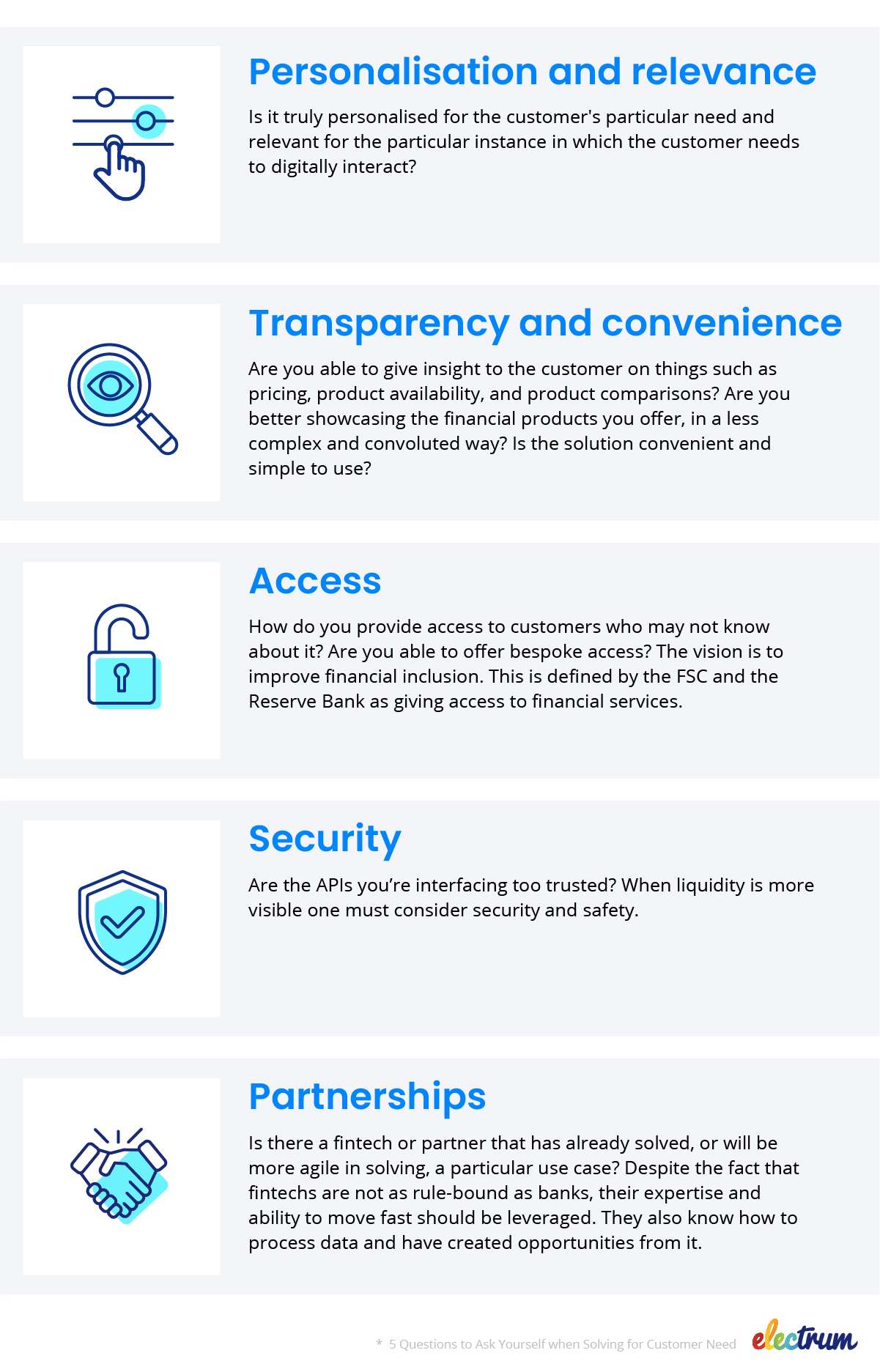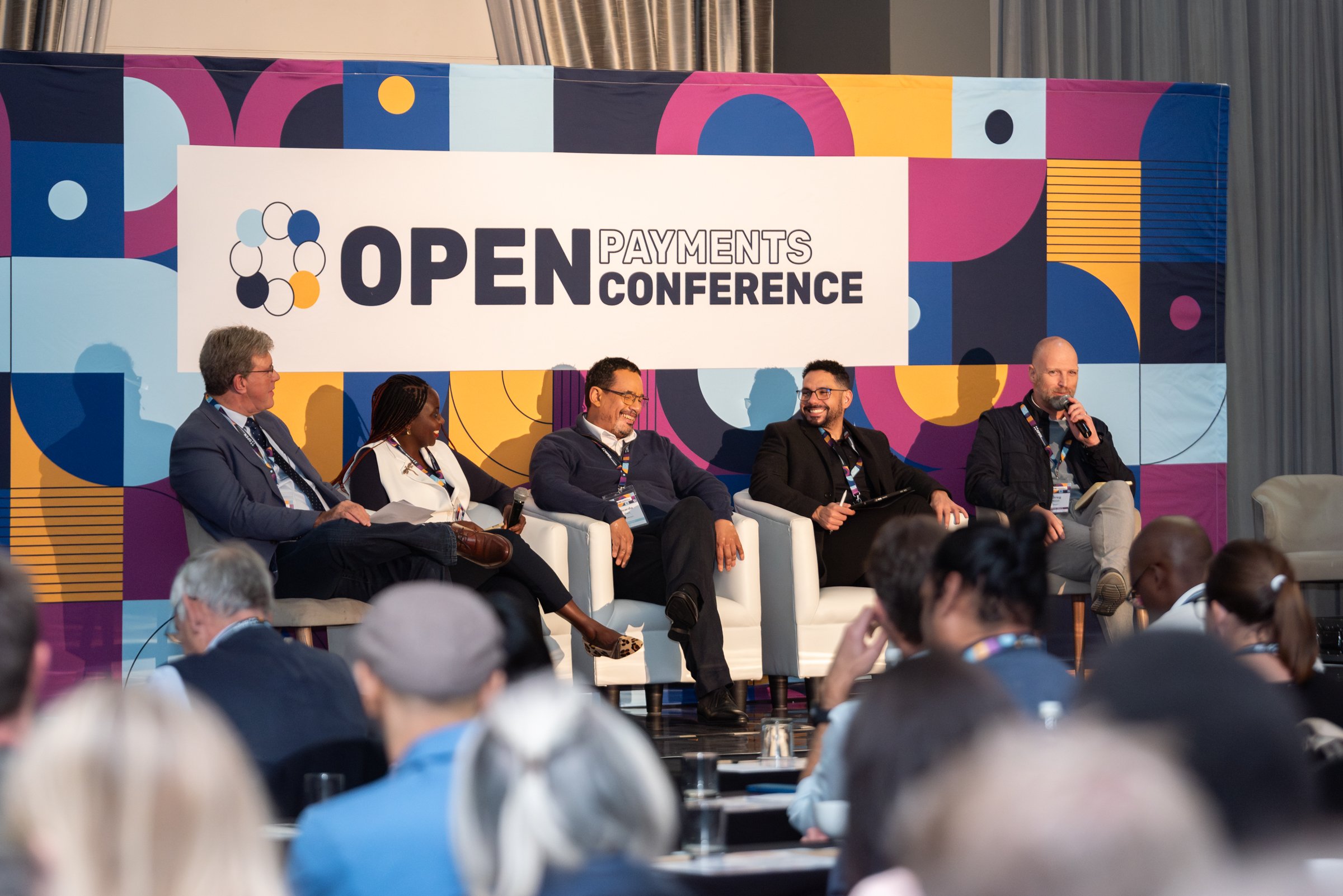
Open banking brings many opportunities, but it's also a really good story. It's a story of hope because the countries in which open banking has been widely adopted have seen positive economic growth. The GDP of those countries has improved and GDP growth is craved by South Africa. We are also only beginning to scratch the surface of open API opportunities, especially in terms of creating meaningful experiences for consumers that include access, safety, and transparency.
Open APIs are the foundation of open banking
Without open APIs, open banking can not exist. Open APIs allow for improved interoperability and enable new players to enter the market with innovative solutions built on top of established systems. This is game-changing to closed-looped legacy systems where, in order for two systems to communicate, a bespoke API had to be built - coming with the risk of introducing friction and compromising interoperability.
Relationships are the pinnacle of making open banking work, if a third-party provider doesn't have a trusted relationship with their bank, innovation will be challenging to realise. In essence, it is about making life easier through systematic change and delivering what customers really want. And, as a bank, if you aren't meeting your customer’s needs, someone else will.
At its core, open banking is a technology bridge joining two different worlds to allow people’s everyday needs to be met.
The combination of payments and open banking is quite remarkable as it creates possibilities that don't exist for either of the solutions individually. Evidence of this is in India with UPI’s real-time cross-border payments. Another example exists in Brazil with PIX where it is expected that 100% of the leading e-commerce stores will accept PIX. PIX is also growing as the payment method of choice in physical stores.
Practical execution of use cases to solve for consumer need
Importantly, any use case has to serve a material need to avoid ending up as a prototype that serves no purpose. The need should be customer-driven in order to ensure widespread adoption.
Once the need has been identified and tested, there are three critical foundation blocks that we know are reliable and trusted: the mobile handset; the internet; and the Real-Time Clearing (RTC) rail with straight-through processing. These foundation blocks need to be leveraged since we know that they can work at scale within solutions that can exist within the ecosystem. And, importantly, they are centred around existing consumer problems such as accessibility and ease of use.
After basic requirements have been met, aspects such as digital ID or know-your-customer limitations can be addressed to further streamline the user experience.
5 Questions to ask yourself when solving for customer need

The good news is that you don't have to create multiple bespoke interactions for your customers. Unlike previous-generation APIs, modern APIs allow for incremental change and are simpler to adjust over time. They are capable of being personalised in the same way as e-commerce users, meaning your ecosystem partners can create some level of a personalised experience.
In addition to solving for customer needs, we must work in a predictable, transparent, consistent, and secure manner. There are many ways we can leverage existing technology to do this; in particular:
-
Scheme rules are fundamentally more powerful than the modern technology that promotes interoperability because they allow for a consistent consumer experience - which ensures transparency.
-
An agreed set of practices and definitions for how we will technically engage with each other and how we work together. This gives us predictability.
-
For consistency we need an agreed-upon semantic language such as ISO 20022, that enables the systems to technically communicate with each other.
Regulators drive change
When you look at what's happening across the world, you’ll find that most successful open banking deployments have been driven by regulation. Over the last 15 years, regulators in the European Union have taken a very active role in driving changes in payment systems, forcing the market to open up to third-party providers through open APIs. This is allowing the industry to widen in terms of payment players and offerings - and enables these players to focus on providing better customer experiences, not just banking products.
Worldwide innovation is largely at the point-of-sale and many systems, including India’s UPI and Brazil’s PIX, build API layers on top of the instant payments infrastructure. The commonality of successful systems is the combination of open banking APIs with the real-time payments platform, plus the key element of digital identity. The most common initiation method, driven by a 10-year regulatory initiative is biometric authentication, with the customer’s fingerprint being the most common identifier.
Collaborating with fintechs gets you to market quicker
Fintechs also drive innovation, banks can be innovative but are often unable to deliver quickly making collaboration with Fintechs attractive. Despite the fact that Fintechs are not as rule bound as banks, their expertise and ability to move fast should be leveraged. The markets that have leveraged the Fintechs are among the most successful. They also know how to process data and have created opportunities from it.
A new operating model for open banking
An important, and the most challenging aspect, of open banking for banks and financial institutions is a change in the operating model.
Firstly, regarding the use of data that needs to be standardised and exposed to others in order to offer innovative services. The key consideration here is the ethical use of the data and the consumer permissions for how it can be stored, retrieved, and exposed.
Second to that is a new strategic imperative for the bank for how they craft and distribute products using the new systems. It's very challenging to move from the traditional vertically integrated banking model to the payments model we have today.
A third operational change is moving processing from business hours to a 24/7 environment because that's how people want to make payments today, and that's fundamental to developing innovative services.
The South African context
South Africa has been on the journey for a while, what do we need to do to catch up?
It starts with promotion by the regulator to open the ecosystem - open banking, open interactions, the use of open APIs, etc. It may be hard to unbundle some initiatives that have come into play to fill the gap of some missed opportunities. However, any new systems should be used to mandate existing standards, such as the QR code standard which is not currently mandatory.
Secondly, open banking needs open minds - we need to build centralised systems that foster openness and interoperability. This involves the move away from closed-loop systems that give banks control within their own ecosystem. Currently, the need exists for us to apply industry-level openness to real-time collections - we’ve been talking about request-to-pay for a long time and there is every indication that it will be a huge success.
We have to identify the key problems that we want to solve and build the open APIs that support all stakeholders. An ideal use case that would solve repayment disputes could be to give lenders a sense of the readiness of a borrower to pay back their loan. This is data that financial institutions have access to and is an example of how we can leverage the opportunity to open the system to others.
Why should South African banks care?
We are moving into complex combinations of financial and related elements to solve customer experiences that require the coming together of a complex network. The only way to do that is through open banking and APIs.
It’s faster, it works, and you'll be able to solve your client's needs more precisely, especially outside of closed-loop systems and at the industry level.
We are fortunate in that South Africa has a real need for opening the ecosystem. If you don't embrace open banking, the opportunity to innovate and get ahead of other players will pass you by.
Either your business takes advantage of the opportunity or a competitor will. So you might as well embrace the inevitable and embrace a little bit of creative disruption.
If you’d like to chat with Werner, our Head of Product, or any other member of the Electrum team about open APIs and new opportunities for your business, send us an email here.

Rachel van Eyk
Rachel van Eyk is the Head of Marketing at Electrum. She has worked in the payments industry since before EMV was a reality. Her favourite pastime has been observing the shift of payments empowerment towards the consumer, because her most extensive payments experience has come from swiping her card and tapping her phone.
Electrum Newsletter
Quarterly insights and news to help you keep up with the latest changes in the payments landscape







